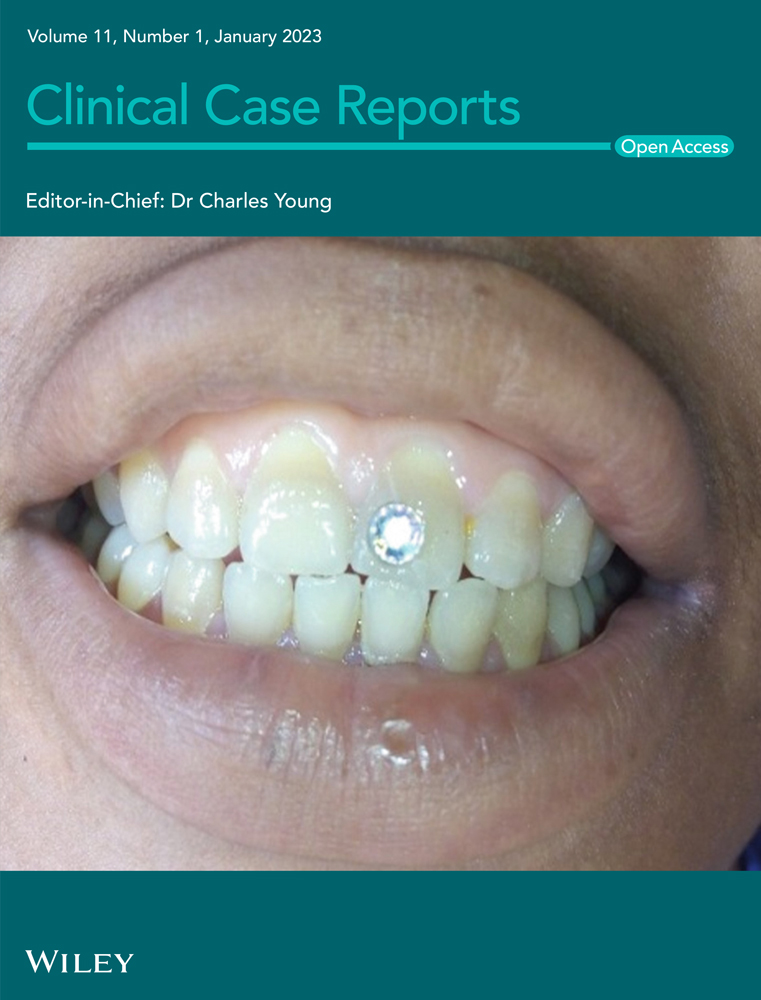Wound myiasis resulting from a neglected insect bite wound
Abstract
Infestation of maggots in humans is uncommon because humans are an accidental host for many dipterous larval species. We present a case of wound myiasis in a homeless person that resulted from a neglected minor insect bite wound.
1 CASE PRESENTATION
A 51-year-old man was brought to the emergency department, by a social activist, with a chronic wound on the left side of his trunk for 3 months. He was complaining of a moving sensation and dull pain at the wound site. Further inquiry revealed that the wound was caused by an insect bite that occurred three months earlier but neglected it. He had no significant past or family history; however, he was homeless for two years. On inspection, a 10 × 7 cm size wound with multiple openings was present in the left trunk above and behind the iliac crest. The wound was covered with unhealthy tissue and multiple maggots with active movements were noted (Figure 1 and Video S1). On palpation, the wound was tender, and the base was indurated. His vital signs and systemic examination were normal. Furthermore, baseline investigation including random blood sugar and serology were normal.

Due to the poor visibility, attempts to remove the maggots with forceps were unsuccessful. Therefore, a piece of gauze soaked in turpentine oil was used to suffocate the maggots. After 30 minutes, the dead maggots were removed (approximately 50 in number) and the unhealthy tissue was debrided under local anesthesia. Further, the wound was cleaned with povidone-iodine, and hemostasis was achieved with an adrenaline-soaked gauze because of bleeding from granulation tissue. After that, the patient was discharged under the care of a social activist with instructions to take oral antibiotics regularly and a wound dressing at scheduled intervals.
Myiasis is an infestation of vertebrates by dipterous larvae (maggots).1 Myiasis has been extensively studied and categorized using a variety of methods. The most frequently used classifications are (1) based on the anatomical site it infests, including cutaneous, external orifice, and internal organ myiasis, and (2) based on the host–parasite relationship, including obligatory, facultative, and accidental/pseudomyiasis.2, 3 The condition is common in tropical and subtropical latitudes of America, Africa, and India.4 Myiasis is encountered frequently in Nepal, which has a combination of two climatic zones, albeit it is reported less.5 Poor health care had raised the burden of disease in Nepal in addition to the climate. Wound myiasis—a form of cutaneous myiasis—is particularly rarer because it typically requires a large and necrotic wound to deposit eggs, but even minor scratches can cause complications, as in this case, which began with an insect bite.6-8 Old age, mental illness, ignorance, low socioeconomic status, poor hygiene, and diabetes are other risk factors for maggot infestation in addition to open wounds.9 Manual removal of the maggots, either with or without suffocation, is the definitive treatment. However, depending on the severity of the lesion, many wound myiasis requires further therapies, such as debriding of necrotic tissue, antiseptic cleansing, dressing, and systemic antibiotics.6
AUTHOR CONTRIBUTIONS
AS managed the case and collected information. AS and BT prepared, reviewed, and edited the original manuscript. NK, BT, and AS finalized the manuscript.
ACKNOWLEDGMENT
None.
FUNDING INFORMATION
No funding was received.
CONFLICT OF INTEREST
None.
ETHICS STATEMENT
Only observational data were used.
CONSENT
Written informed consent was obtained from the patients to publish this report in accordance with the journal's patient consent policy.
Open Research
DATA AVAILABILITY STATEMENT
All the required data are in the manuscript itself and supporting data are submitted along with mansucript.




